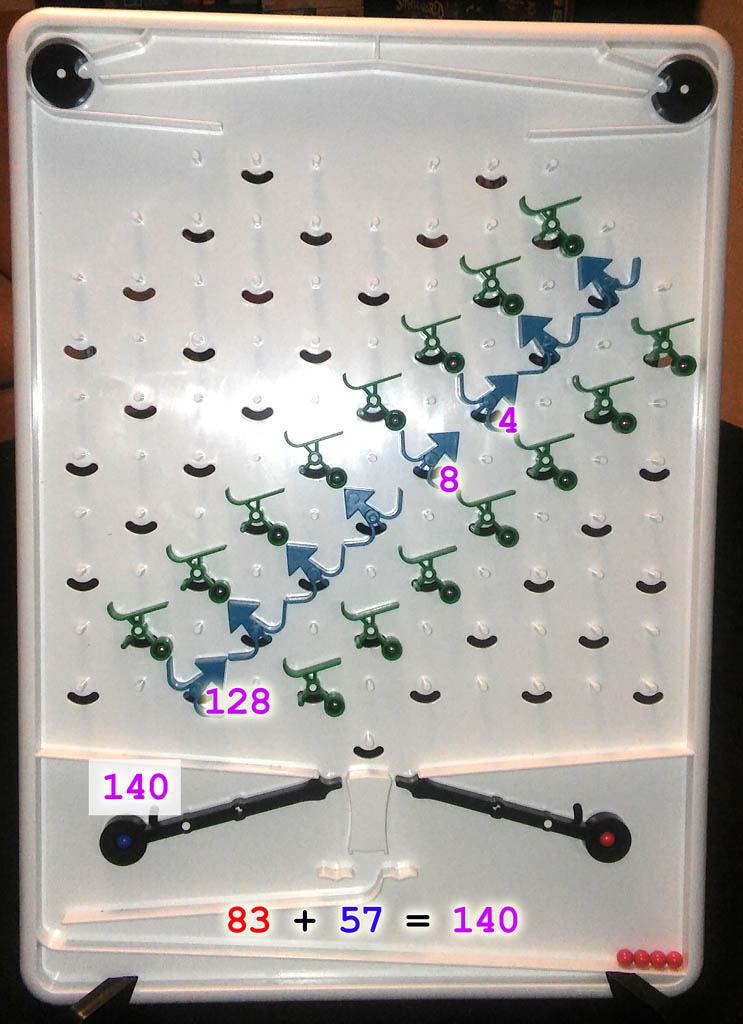It would be cool to have a part that can initially hold a ball and when triggered releases it.
Although it’s a hack from the available parts, I’ve been able to use this method to calculate 57+68 in 4 seconds.
I first set up a register of Ramps parallel to a register of Bits. I then set the Bits to one addend of the equation. I place balls in the back of the Ramps to represent the other addend.

I then flip the Ramps downward in succession to release the corresponding balls. After about 4 seconds, we have our answer.

Here is the video of the “computation”
I was thinking if there could be a modified Ramp part that could also hold a ball on setup and then when the active ball hits this Ramp, it also releases a stored ball in the opposite direction (if it has one). The tricky part would be timing because multiple released balls in quick succession could cause backups. However, it is an idea that provides lots of interesting concepts if it could be implemented somehow.


